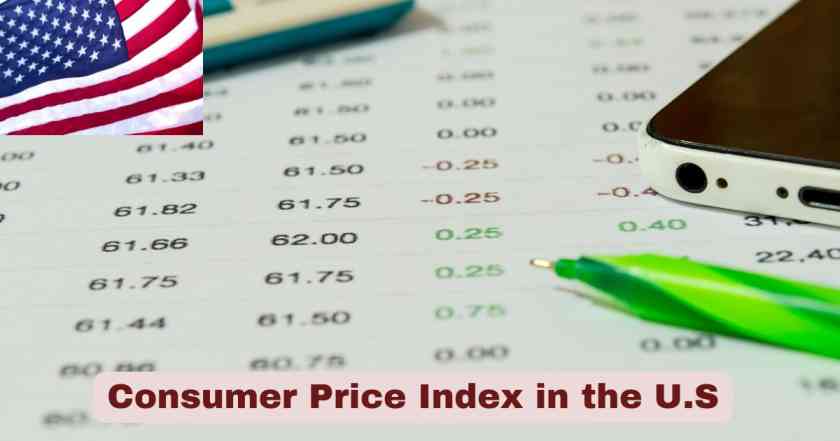Consumer Price Index in US 2025
The Consumer Price Index (CPI) serves as the cornerstone measurement of inflation in the United States, tracking the average change in prices paid by consumers for a basket of goods and services over time. In 2025, the CPI continues to play a crucial role in economic policy decisions, wage negotiations, and understanding the purchasing power of American consumers. The Bureau of Labor Statistics (BLS) releases this vital economic indicator monthly, providing insights into the country’s inflation trends and economic health.
As we navigate through 2025, the Consumer Price Index reflects the ongoing economic dynamics following years of significant inflationary pressures. The CPI-U (Consumer Price Index for All Urban Consumers) represents over 90 percent of the total U.S. population, making it the most comprehensive measure of consumer inflation. This index encompasses expenditures of urban residents including professionals, self-employed individuals, unemployed persons, and retirees, providing a broad representation of American consumer spending patterns.
CPI Facts and Statistics in US 2025
| CPI Metric | Current Value/Rate | Previous Period | Annual Change |
|---|---|---|---|
| CPI-U Index Level (May 2025) | 321.47 points | 320.80 points (April) | 2.4% increase |
| Monthly Change (May 2025) | 0.1% increase | 0.2% (April) | Seasonally adjusted |
| Core CPI (excluding food & energy) | 2.8% annually | 2.9% (previous) | 0.1% monthly |
| Food Index Annual Change | 3.0% increase | 2.4% (previous year) | Above average |
| Energy Index Annual Change | -3.3% decrease | Volatile monthly | Below 2024 levels |
| Shelter Index Annual Change | 4.0% increase | Largest CPI component | Housing costs rising |
| CPI-W Index Level (March 2025) | 313.250 points | 2.2% annually | Wage earners focus |
| Base Period Reference | 1982-84 = 100 | Standard baseline | Historical comparison |
The Consumer Price Index data for 2025 reveals a complex inflation landscape characterized by moderating price pressures compared to previous years. The May 2025 CPI-U reading of 321.47 points represents a 2.4% annual increase, indicating that inflation continues to trend downward from the elevated levels experienced in recent years. This 0.1% monthly increase in May, following a 0.2% rise in April, demonstrates the Federal Reserve’s monetary policy effectiveness in curbing inflationary pressures.
The core CPI, which excludes volatile food and energy prices, registered a 2.8% annual increase in 2025, providing Federal Reserve officials with a clearer picture of underlying inflation trends. This measure is particularly significant as it filters out temporary price fluctuations and focuses on persistent inflationary pressures. The shelter index, representing the largest component of the CPI, increased 4.0% annually, reflecting ongoing housing cost pressures that continue to impact American households. Meanwhile, the energy index decreased 3.3% annually, primarily due to lower gasoline prices, which provided some relief to consumers facing elevated costs in other categories.
Food Price Trends in US 2025
| Food Category | Monthly Change | Annual Change | Impact Level |
|---|---|---|---|
| Food at Home | 0.5% increase | 2.4% annually | Moderate |
| Food Away from Home | 0.4% increase | 3.8% annually | High |
| Meats, Poultry, Fish, Eggs | 1.3% increase | 7.9% annually | Very High |
| Eggs Index | 5.9% increase | 60.4% annually | Extreme |
| Fruits and Vegetables | -0.5% decrease | -0.7% annually | Deflationary |
| Dairy Products | 1.0% increase | 2.2% annually | Moderate |
| Nonalcoholic Beverages | 0.6% increase | 2.4% annually | Moderate |
| Cereals and Bakery Products | -0.1% decrease | 1.1% annually | Low |
The food sector within the Consumer Price Index presents a mixed picture in 2025, with significant variations across different categories. Food at home prices increased 0.5% monthly and 2.4% annually, while food away from home rose 0.4% monthly and 3.8% annually, indicating that restaurant and dining costs continue to outpace grocery prices. This divergence reflects ongoing labor cost pressures in the food service industry and supply chain efficiencies in grocery retail.
The most dramatic price movement occurred in the eggs category, which surged 60.4% annually, driven by avian flu outbreaks that significantly reduced supply. The broader meats, poultry, fish, and eggs index increased 7.9% annually, making protein sources a major contributor to food inflation. Conversely, the fruits and vegetables index declined 0.7% annually, providing some offset to overall food price increases. These patterns reflect both supply-side disruptions and seasonal variations that characterize agricultural commodity markets in the United States.
Energy Costs in US 2025
| Energy Component | Monthly Change | Annual Change | Consumer Impact |
|---|---|---|---|
| Overall Energy Index | -2.4% decrease | -3.3% annually | Positive relief |
| Gasoline (All Types) | -6.3% decrease | -9.8% annually | Significant savings |
| Electricity | 0.9% increase | 2.8% annually | Moderate increase |
| Natural Gas | 3.6% increase | 9.4% annually | High impact |
| Fuel Oil | -4.2% decrease | -7.6% annually | Regional relief |
| Energy Services | 1.6% increase | 4.2% annually | Utility costs rising |
| Energy Commodities | -6.1% decrease | -9.5% annually | Major deflation |
Energy prices in 2025 have provided significant relief to American consumers, with the overall energy index declining 3.3% annually. The gasoline index decreased 9.8% annually, offering substantial savings for transportation costs and contributing to reduced inflationary pressures across the economy. This 6.3% monthly decrease in gasoline prices during specific periods has helped offset increases in other CPI components, demonstrating the volatile nature of energy markets.
However, energy services tell a different story, with electricity prices increasing 2.8% annually and natural gas surging 9.4% annually. These increases in utility costs have impacted household budgets, particularly during heating seasons. The divergence between energy commodities and services reflects different market dynamics, with crude oil price volatility affecting gasoline costs while regulatory and infrastructure factors influence utility pricing. This pattern underscores the complex relationship between energy markets and consumer inflation in the United States.
Core CPI Trends in US 2025
| Core CPI Category | Monthly Change | Annual Change | Economic Significance |
|---|---|---|---|
| All Items Less Food & Energy | 0.1% increase | 2.8% annually | Fed’s target measure |
| Shelter | 0.2% increase | 4.0% annually | Largest component |
| Transportation Services | -1.4% decrease | 3.1% annually | Mixed trends |
| Medical Care Services | 0.5% increase | 3.0% annually | Healthcare costs |
| New Vehicles | 0.1% increase | 0.0% annually | Stable pricing |
| Used Cars and Trucks | -0.7% decrease | 0.6% annually | Market normalization |
| Apparel | 0.4% increase | 0.3% annually | Seasonal variation |
| Motor Vehicle Insurance | Significant increase | 7.5% annually | Cost pressures |
The core Consumer Price Index, excluding food and energy, increased 2.8% annually in 2025, representing the smallest 12-month increase since March 2021. This deceleration signals progress toward the Federal Reserve’s 2% inflation target, though the index remains elevated above desired levels. The 0.1% monthly increase in core CPI demonstrates moderating price pressures across non-volatile categories, suggesting that monetary policy measures are taking effect.
Shelter costs, comprising the largest portion of the CPI, rose 4.0% annually, representing the smallest increase since November 2021 but still contributing significantly to overall inflation. Transportation services declined 1.4% monthly due to lower airline fares, while motor vehicle insurance increased 7.5% annually, reflecting ongoing cost pressures in the automotive sector. The medical care services index rose 3.0% annually, indicating persistent healthcare cost inflation that continues to burden American consumers and the broader economy.
Regional CPI Variations in US 2025
| Geographic Region | CPI-U Level | Annual Change | Key Drivers |
|---|---|---|---|
| Northeast | Above National Average | 2.5% annually | Housing costs |
| Midwest | Below National Average | 2.2% annually | Energy savings |
| South | Near National Average | 2.4% annually | Mixed factors |
| West | Above National Average | 2.7% annually | Shelter, transport |
| Urban Areas | Higher volatility | 2.4% average | Service costs |
| Metropolitan Statistical Areas | Tracked separately | Varies by region | Local factors |
Regional variations in the Consumer Price Index across the United States reveal significant geographic disparities in inflation experiences during 2025. The Northeast and West regions typically experience above-average inflation rates, primarily driven by elevated housing costs and transportation expenses. Western states face particular pressure from shelter costs, while Northeastern areas contend with higher energy service costs during winter months.
Midwestern states generally report below-average inflation rates, benefiting from lower transportation costs and more stable housing markets. The South maintains inflation rates close to the national average, with mixed regional factors contributing to price pressures. These geographic variations reflect local economic conditions, regulatory environments, and supply chain dynamics that influence consumer prices across different parts of the United States.
CPI Impact on Federal Policy in US 2025
| Policy Area | CPI Influence | 2025 Response | Future Implications |
|---|---|---|---|
| Federal Reserve Policy | Primary indicator | Interest rate decisions | Monetary policy direction |
| Social Security COLA | Direct calculation | Annual adjustments | Beneficiary payments |
| Tax Bracket Adjustments | Inflation indexing | IRS modifications | Taxpayer burden |
| Federal Employee Pay | Wage scale reference | Salary adjustments | Government compensation |
| Minimum Wage Discussions | Economic context | State-level decisions | Labor market impacts |
| Contract Escalations | Cost-of-living clauses | Automatic adjustments | Business planning |
The Consumer Price Index serves as a fundamental tool for Federal Reserve monetary policy decisions in 2025, directly influencing interest rate determinations and economic forecasting. The 2.4% annual CPI increase provides the central bank with crucial data for assessing progress toward its 2% inflation target. This measurement guides decisions on federal funds rates, quantitative easing programs, and forward guidance communications to financial markets.
Social Security cost-of-living adjustments (COLA) rely directly on CPI calculations, affecting millions of American retirees and disabled beneficiaries. The 2025 CPI data determines annual payment increases, making this index crucial for social program funding and beneficiary financial planning. Additionally, tax bracket adjustments use CPI measurements to prevent inflation-driven bracket creep, ensuring that taxpayers maintain appropriate tax burdens relative to their purchasing power.
Business and Consumer Implications in US 2025
| Sector Impact | CPI Correlation | Business Response | Consumer Effect |
|---|---|---|---|
| Retail Industry | Direct pricing pressure | Margin adjustments | Higher costs |
| Food Service | Labor and commodity costs | Menu price increases | Dining expenses |
| Transportation | Fuel and service costs | Fare adjustments | Travel budgets |
| Healthcare | Medical service inflation | Insurance premiums | Healthcare access |
| Housing Market | Shelter cost tracking | Rent adjustments | Housing affordability |
| Financial Services | Interest rate environment | Product pricing | Credit costs |
Businesses across America use Consumer Price Index data to make strategic pricing decisions, wage negotiations, and contract escalations in 2025. The 2.4% annual inflation rate influences corporate planning, with companies adjusting pricing strategies to maintain profit margins while remaining competitive. Retail sectors face particular challenges balancing cost pressures with consumer demand, leading to selective price increases and operational efficiency improvements.
Consumers experience CPI impacts through direct price changes and indirect effects on wages, benefits, and investment returns. The core CPI increase of 2.8% affects purchasing power calculations, retirement planning, and household budgeting decisions. Fixed-income individuals particularly feel the impact of inflation, while wage earners may benefit from cost-of-living adjustments tied to CPI measurements. Understanding these relationships helps Americans make informed financial decisions in an inflationary environment.
CPI Outlook in US 2025
The Consumer Price Index data for 2025 reveals a complex economic landscape where inflation continues to moderate from previous peaks while remaining above Federal Reserve targets. The 2.4% annual increase in the CPI-U represents progress toward price stability, though significant challenges remain in categories such as shelter (4.0% annually) and food away from home (3.8% annually). The core CPI at 2.8% annually suggests underlying inflationary pressures persist despite monetary policy interventions.
Looking forward, the CPI trends in 2025 indicate that American consumers and policymakers must navigate an environment where regional variations, sector-specific pressures, and global economic factors continue to influence domestic price levels. The Bureau of Labor Statistics data provides essential insights for economic decision-making, from Federal Reserve policy to business strategy and personal financial planning. As the year progresses, monitoring these Consumer Price Index developments remains crucial for understanding the trajectory of American economic recovery and long-term price stability.
Disclaimer: The data research report we present here is based on information found from various sources. We are not liable for any financial loss, errors, or damages of any kind that may result from the use of the information herein. We acknowledge that though we try to report accurately, we cannot verify the absolute facts of everything that has been represented.







